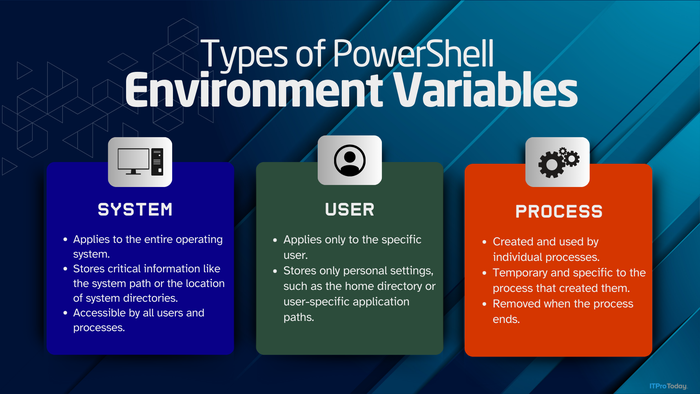
Insight and analysis on the information technology space from industry thought leaders.
The Overlooked Art of Software Localization for Non-Traditional MarketsThe Overlooked Art of Software Localization for Non-Traditional Markets
Despite software's global reach, many companies overlook a critical aspect of their development process: localization for non-traditional markets.
February 13, 2025

By Gary Espinosa
While giants like Google and Microsoft have mastered the art of tailoring their products for diverse audiences, smaller companies often focus solely on English-speaking or Western markets. Is that a good idea, though?
Today, we'll explore just that — the overlooked art of software localization for non-traditional markets, its challenges, and the immense potential it holds for businesses willing to embrace it.
What Is Software Localization?
Software localization is adapting a software product to meet a specific target market's linguistic, cultural, and technical requirements. It goes beyond mere translation, encompassing everything from date formats and currency symbols to user interface (UI) design and compliance with local regulations.
For example, a calendar app localized for Japan must account for the Japanese era system, while a payment app in India must support UPI transactions. The goal? To make users feel at home.
While localization is often associated with major markets like China, Germany, or Brazil, non-traditional markets — such as Southeast Asia, the Middle East, Africa, and Eastern Europe — are frequently overlooked. These regions, however, are home to rapidly growing economies, tech-savvy populations, and untapped user bases that need to be spoken to.
Localization efforts must also include proper translation, UX redesigns, and a team ready to handle the needs and complaints in a certain region. All of this is merely a microcosm of why software developers should care about localization and view it as an integral part of their product. But before tackling the challenges, let's examine why non-traditional markets matter.
Why Non-Traditional Markets Matter
Whether it's a SaaS product or a video game, devs are usually laser-focused on purchasing power. Some don't even believe in geographical pricing. In their eyes, the richer a country, the higher the chance of people using the software.
This couldn't be further from the truth, as there are dozens upon dozens of untapped regions, which are attracting more and more companies due to:
Rapid digital adoption: Countries like Indonesia, Nigeria, and Vietnam are experiencing explosive growth in internet and smartphone penetration. With millions of new users coming online each year, the demand for localized software is skyrocketing.
Less competition: While Western markets are saturated with competing apps and platforms, non-traditional markets often have fewer players. This creates a first-mover advantage for companies willing to invest in localization.
Cultural nuances: Users in non-traditional markets often prefer software that reflects their cultural context. For instance, a social media app incorporating local festivals or traditions can resonate more deeply with users than a generic, one-size-fits-all solution.
Economic growth: Many non-traditional markets are experiencing rapid economic growth, leading to increased disposable income and spending power. By localizing software, companies can tap into this growing consumer base.
Challenges of Localizing for Non-Traditional Markets
Everyone dreams of a global audience, but are they really prepared to pay the price?
While the rewards are significant, localizing software for non-traditional markets is not without its challenges. For the most part, SaaS companies are in a constant kerfuffle with:
Linguistic complexity: Many non-traditional markets are linguistically diverse. For example, India has 22 official languages, while Nigeria has more than 500. Choosing which languages to support can be a daunting task.
Cultural sensitivity: Localization requires a deep understanding of cultural norms and values. An innocuous color, symbol, or phrase in one culture may be offensive or confusing in another. For instance, red symbolizes luck in China but danger in Western cultures.
Technical constraints: Some languages, such as Arabic and Hebrew, are written right-to-left (RTL), requiring significant changes to UI design. Additionally, character-based languages like Chinese and Japanese may require adjustments to font sizes and layouts.
Regulatory compliance: Non-traditional markets often have unique regulatory requirements, such as data privacy laws or content restrictions. Navigating these regulations can be complex and time-consuming.
Resource allocation: Localization can be resource-intensive, requiring investment in translation, design, and testing. Also, there's the question of feasibility. If you have three monthly visitors from Nepal, is it reasonable to spend $10,000 on localization? Of course not; you need argumentation for such efforts.
Best Practices for Localizing Software
Despite these challenges, successful localization is achievable if you abide by localization best practices and have the right approach. Here are some best practices for localizing software for non-traditional markets:
Conduct Market Research
Before tackling localization, conduct thorough market research to understand your target audience's needs, preferences, and behaviors. This will help you prioritize which languages and features to focus on. But this beckons the question: When is the right time to pull the trigger?
You wouldn't want to overextend your resources and funds for a dozen potential leads, but you also don't want to be late to the party. Hence, the ideal approach would be to use social commerce to subtly nudge users from certain regions and subsequently "surprise" them with full localization.
Collaborate with Local Experts
Collaborating with native speakers, cultural consultants, and local developers is essential to ensure your software is culturally and linguistically accurate. Their insights can help you avoid costly mistakes and provide users with a more authentic user experience.
Whether it's a slang phrase, a cheeky pun, or trying to convey a complex message, they'll be able to give you the raw, unfiltered opinion of a native speaker. Don't rely on your hunches or your B in tenth-grade Spanish class; it can backfire spectacularly.
Design for Flexibility
Build your software with localization in mind from the start. Use scalable UI designs, support Unicode for multiple languages, and avoid hardcoding text or culturally specific elements.
You can also be creative, especially when it comes to finding solutions for elements that seemingly don't fit. For large text, users can simply scan a QR code that'll take them to a separate page or a microsite.
Test Extensively
Localization testing ensures your software works seamlessly in the target market. While you should cover every nook and cranny, your priority should be to test for linguistic accuracy, UI functionality, and compliance with local regulations.
It's yet another form of proof that localization is an ongoing process. At the same time, it's an opportunity to gather feedback from beta testers and later users in the target market and continuously refine your software to better meet their needs.
Success Stories in Non-Traditional Markets
Several companies have successfully tapped into non-traditional markets through effective localization. Here are a few examples:
TikTok in India: TikTok's success in India can be attributed to its localization strategy. The app supported multiple Indian languages, featured local content creators, and incorporated regional trends and challenges. At its peak, TikTok had over 200 million users in India before being banned in 2020.
M-Pesa in Kenya: M-Pesa, a mobile money transfer service, revolutionized financial inclusion in Kenya by localizing its platform to meet the needs of unbanked populations. The service allowed users to send and receive money via SMS, bypassing the need for traditional banking infrastructure.
Grab in Southeast Asia: Grab, a ride-hailing and delivery app, has become a household name in Southeast Asia by tailoring its services to local markets. The app supports multiple languages, offers region-specific payment options, and integrates with local businesses.
Conclusion
The art of software localization for non-traditional markets is a powerful yet often overlooked strategy for global growth. By meeting the unique needs of diverse audiences, companies can tap into new markets, drive user engagement, and create lasting impact.
While the challenges are real, the rewards far outweigh the risks. In an increasingly interconnected world, localization is not just a business strategy — it's a bridge to understanding, collaboration, and shared success.
So, whether you're a startup or an established player, it's time to look beyond traditional markets and embrace the untapped potential of localization. The world is waiting.
About the author:
Gary Espinosa is an expert writer with over 10 years of experience in software development, web development, and content strategy. He specializes in creating high-quality, engaging content that drives conversions and builds brand loyalty. He has a passion for crafting stories that captivate and inform audiences, and he's always looking for new ways to engage users.
About the Author
You May Also Like








.jpg?width=700&auto=webp&quality=80&disable=upscale)
